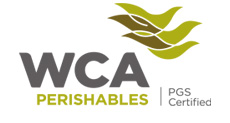Perishable Modes
Specific Product Handling Solutions
In today’s handling of perishable products etc there are many ways to ensure flexible and effective shipping of products that require temperature sensitive handling.
Cold Energy during the Supply Chain - Eutectics & Cryogenics
Very often flexible methods are required to ensure a seamless cold chain. Refrigerated units are insulated units without mechanical refrigeration. Eutectic refrigeration allows the required temperature to be maintained for 24 hours and more for chilled products as well as for frozen.
The eutectic plate releases a constant cooling capacity due to the latent melting heat from the eutectic mixture. Placed in the top part of the container, the eutectic plate releases the cooling capacity previously accumulated in the cold room during the freezing process.
To ensure the maximum efficiency from eutectic plate, the eutectic liquid must be completely solidified. The freezing temperature must be at least 5°C less than the melting temperature of the eutectic fluid. Depending on the type of refrigeration unit used, the freezing time may be from 6 to 24 hours.
Seven eutectic solutions ensure maintenance of the requested temperature for chilled or frozen products.
Due to its very low sublimation temperature (-78.5°C), Dry Ice is a very efficient cooling agent, mainly used for the transport of frozen products.
It can be in different forms such as pellets, blocks, sticks, slices or snow.
Dry Ice sublimates, with refrigeration power of 150 Kcal per Kg.
Traceability
Various traceability systems can be integrated in the insulated container –this is imperative in today’s fast developing requirements for high standards of cargo tracking and temperature recording.
Classic Identification: fleet number, bar code, …
Electronic Identification technology: intelligent tag, chips, using RFID...
According to the level of automation this allows recording of many indicators to help logistics management optimization, in accordance with HACCP procedures
Traceability of containers and distribution :
- History of cleaning
- Container Identification
- Route tracking in the warehouse
- Flow tracking during distribution
- History of maintenance
Traceability of Cold chain :
Tracking and recording of temperature inside the container
Tracking of container door openings/closings
Tracking of cooling agent (refrigerant): weight of dry ice, quantity of eutectic plates
Cold Chain Logistics Development
The development of the insulated container since the end of the sixties is linked to the frozen products market development. At this time, to ensure the quality of deliveries from the RDCS to the stores, the use of insulated containers became essential. It allowed transport in standard vehicles together with the ambient groceries, avoiding the organization of specific and expensive
delivery
rounds.
Loaded with foodstuffs in the cold room of the RDC and unloaded to the displays at the store, the insulated container minimizes the handling costs at the delivery point, avoids investments in refrigerated docks or cold rooms at the departure and arrival points, and ensures a perfect mastery of the cold chain during all different stages of the logistics chain.
Dedicated logistics for temperature controlled products organized using insulated containers is now well known as sure, safe and efficient.
The major logistics operators have extended their use to chilled products and integrated such a solution in their HACCP procedures.
Many others business sectors understand the advantages and now include this solution in their logistics operations; such as institutions and hospitals to carry meal trays from the main kitchen to consumption places, pharmaceutical retailers for their deliveries of sensitive products, restaurant chains for the wholesale supply of their restaurants and so on...
Cryogenics
Mobile and independent containers with cryogenic refrigeration offer a lot of possibilities, most of the time unrecognized. Dry Ice is well known as a cooling agent for frozen foodstuffs, and during recent years this application for containers has significantly evolved.
The insulated container is fitted with a Siber System Tank designed to receive the cooling agent. Dry Ice is the result of the release of liquid CO2 in air, and as soon as it has been produced, the Dry Ice starts to sublimate at a temperature of –78.5°C and provides a cold energy capacity of 150 K/Cal per Kilo.









